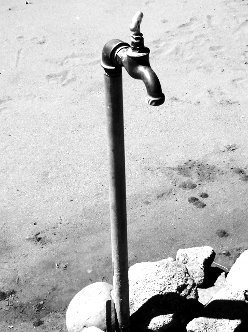WSAA details Gap needs
 The Water Services Association of Australia (WSAA) says it welcomes Federal Government plans to inject $150 million to ensure safe drinking water for First Nations communities.
The Water Services Association of Australia (WSAA) says it welcomes Federal Government plans to inject $150 million to ensure safe drinking water for First Nations communities.
The WSAA released a report in November 2022 titled “Closing the Water for People and Communities Gap: Improving Water Services to First Nations Remote Communities”.
The report highlights the lack of regular water quality testing in over 500 First Nations communities, resulting in drinking water with high levels of uranium, arsenic, fluoride, and nitrate that surpass the Australian Drinking Water Guidelines.
The report also estimates that a minimum investment of $2.2 billion is needed to bring drinking water up to standard, and more when including the replacement of old pipes and plumbing.
On the 15th anniversary of the Stolen Generations apology to Parliament, the Federal Government announced a significant step towards improving water quality and health outcomes for First Nations communities by expanding funding through the National Water Grid.
The announcement includes a requirement to engage with impacted First Nations communities as part of project development to ensure their views, aspirations, and priorities are known.
While this is a positive step, WSAA Executive Director Adam Lovell notes that more investment will be required in the future to address the issue.
The WSAA report recommends that all states and territories formalise the Australian Drinking Water Guidelines to ensure at least a minimum quality standard is met, regardless of location.
It also calls for ongoing investment to build capacity and capability in First Nations communities, as well as a stronger voice in the services they receive.
The report's case studies demonstrate that poor water quality has significant knock-on effects for communities beyond drinking water, affecting health hardware in housing such as bathing, washing, and air conditioning.
Following the report's release, WSAA has developed a proposal to integrate the human experience and embed Indigenous participation into the conception, delivery, and operations of drinking water supplies.
This includes the development of national frameworks, such as a good practice guide to design and operate remote water supplies, First Nations engagement in drinking water supplies, and training capabilities through the concept of a water ranger program.
The WSAA report comes at a crucial time, with the Closing the Gap targets for infrastructure calling for equitable services and the UN conference on Water and the Sustainable Development Goals in New York in March 2023 presenting an opportunity and a call to urgently improve water quality for First Nations communities.
By addressing the issue of poor water quality, WSAA says that significant progress can be made towards closing the gap between First Nations communities and the wider Australian population.








 Print
Print